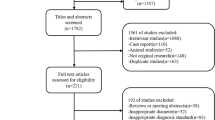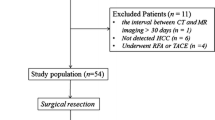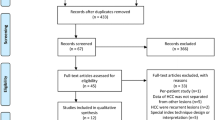Abstract
Objectives
To prospectively compare the diagnostic performance of ultrasound (US), multidetector computed tomography (MDCT) and contrast-enhanced magnetic resonance imaging (MRI) in cirrhotic patients who were candidates for liver transplantation.
Methods
One hundred and forty consecutive patients with 163 hepatocellular carcinoma (HCC) nodules underwent US, MRI and MDCT. Diagnosis of HCC was based on pathological findings or substantial growth at 12-month follow-up. Four different image datasets were evaluated: US, MDCT, MRI unenhanced and dynamic phases, MRI unenhanced dynamic and hepatobiliary phase. Diagnostic accuracy, sensitivity, specificity, PPV and NPV, with corresponding 95 % confidence intervals, were determined. Statistical analysis was performed for all lesions and for three lesion subgroups (<1 cm, 1-2 cm, >2 cm).
Results
Significantly higher diagnostic accuracy, sensitivity and NPV was achieved on dynamic + hepatobiliary phase MRI compared with US, MDCT and dynamic phase MRI alone. The specificity and PPV of US was significantly lower than that of MDCT, dynamic phase MRI and dynamic + hepatobiliary phase MRI. Similar results were obtained for all sub-group analyses, with particular benefit for the diagnosis of smaller lesions between 1 and 2 cm.
Conclusions
Dynamic + hepatobiliary phase MRI improved detection and characterisation of HCC in cirrhotic patients. The greatest benefit is for diagnosing lesions between 1 and 2 cm.
Key Points
• US, CT and MRI can all identify HCC in cirrhotic patients
• US has good sensitivity but suffers from false-positive findings
• Dynamic CT and MR have similar diagnostic performance for diagnosing HCC
• Dynamic + hepatobiliary phase MRI significantly improves detection and characterisation of HCC
• The greatest benefit is for the diagnosis of lesions between 1 and 2 cm


Similar content being viewed by others
References
Yang JD, Roberts LR (2010) Epidemiology and management of hepatocellular carcinoma. Infect Dis Clin North Am 24:899–919
Gomaa AI, Khan SA, Toledano MB, Waked I, Taylor-Robinson SD (2008) Hepatocellular carcinoma: epidemiology, risk factors and pathogenesis. World J Gastroenterol 14:4300–4308
Gambarin-Gelwan M, David CD, Shapiro R et al (2000) Sensitivity of commonly available screening test in detecting hepatocellular carcinoma in cirrhotic patients undergoing liver transplantation. Am J Gastroenterol 95:1535–1538
Reinhold C, Hammers L, Taylor CR et al (1995) Characterization of focal hepatic lesions with Duplex sonogrphy: findings in 198 patients. AJR Am J Roentgenol 164:1131–1135
Noguchi Y, Murakami T, Kim T et al (2003) Detection of hepatocellular carcinoma: comparison of dynamic MR imaging with dynamic double arterial phase helical CT. AJR Am J Roentgenol 180:455–460
Kim YK, Kim CS, Chung GH et al (2006) Comparison of gadobenate dimeglumine-enhanced MR and 16-MDCT for the detection of hepatocellular carcinoma. AJR Am J Roentgenol 186:149–157
Peterson MS, Baron RL, Marsh JW, Oliver JH III, Confer SR, Hunt LE (2000) Pretransplantation Surveillance for possible hepatocellular carcinoma in patients with cirrhosis: epidemiology and CT-based tumor detection rate in 430 cases with surgical pathologic correlation. Radiology 217:743–749
Sangiovanni A, Manini MA, Iavarone M et al (2010) The diagnostic and economic impact of contrast imaging techniques in the diagnosis of small hepatocellular carcinoma in cirrhosis. Gut 59:638–644
Teefey SA, Hildeboldt CC, Dehdashti F et al (2003) Detection of primary hepatic malignancy in liver transplant candidates: prospective comparison of CT, MR imaging, US, PET. Radiology 226:533–542
Libbrecht L, Bielen D, Verslype C et al (2002) Focal lesions in cirrhotic explant livers: pathological evaluation and accuracy of pretransplantation imaging examinations. Liver Transpl 8:749–761
Freeman RB, Mithoefer A, Ruthazer R et al (2006) Optimizing staging for hepatocellular carcinoma before liver transplantation: a retrospective analysis of the UNOS/OPTN database. Liver Transpl 12:1504–1511
Boone JM (2006) Multidetector CT: opportunities, challenges, and concerns associated with scanners with 64 or more detector rows. Radiology 241:334–337
Marin D, Catalano C, De Filippis G et al (2009) Detection of hepatocellular carcinoma in patients with cirrosi: added value of coronal multiplanar reformations from isotropix voxel with 64-MDCT. AJR Am J Roentgenol 192:775–782
D’Onofrio M, Faccioli N, Zamboni G et al (2008) Focal liver lesions in cirrohosis: value of contrast-enhanced ultrasonography compared with Doppler ultrasound and alpha-fetoprotein levels. Radiol Med 113:978–991
Baron RL, Oliver JH III, Confer S et al (1997) Screening cirrhosis for hepatocellular carcinoma (HCC) with helical contrast CT: specificity. Radiology 2005:143
Bruix J, Scherman M, Llovet JM et al (2001) Clinical managment of hepatocellular carcinoma. Conclusions of the barcellona-2000 EASL conference. Europe Assosation for the Study of the Liver. J Hepatol 35:421–430
Marin D, Di Martino M, Guerrisi A et al (2009) Hepatocellular carcinoma in patients with cirrhosis: qualitative comparison of gadobenate dimeglumine-enhanced MR imaging and multiphasic 64-section CT. Radiology 251:1–8
Kim JI, Lee MJ, Choi JY et al (2008) The value of gadobenate dimeglumine-enhanced delayed phase MR imaging for characterization of hepatocellular carcinoma nodules in the cirrhotic liver. Invest Radiol 43:202–210
Kim YK, Kim SC, Lee YH et al (2004) Comaprison of superparamgnetic Iron Oxide-Enhanced and gadobenate dimeglumine-enhanced MRI for detection of small hepatocellular carcinomas. AJR Am J Roentgenol 182:1217–1223
Hammerstingl R, Huppertz A, Breuer J et al (2008) Diagnostic efficacy of gadoxedic acid (Primovist)-enhanced MRI and spiral CT for a therapeutic strategy: comparison with intraopeartive and histological findings in focal lilver lesions. Eur Radiol 18:457–467
Di Martino M, Marin D, Guerrisi G et al (2010) Intraindividual comparison of gadoxetate disodium-enhanced MR imaging and 64-section multidetector CT in the detection of hepatocellular carcinoma in patients with cirrhosis. Radiology 256:806–816
Ebara M, Hatano R, Fukuda H et al (1998) Natural course of small hepatocellular carcinoma with underlying cirrhosis. A study of 30 patients. Hepatogastroenterology 45:1214–1220
International Working Party (1995) Terminology of nodular hepatocellular lesions. Hepatology 22:983–993
Harvey CJ, Albrecht T (2001) Ultrasound of focal liver lesions. Eur Radiol 11:1578–1593
Bruix J, Scherman M (2005) Management of hepatocellular carcinoma. Hepatology 42:1208–1236
Forner A, Vilana R, Ayuso C et al (2008) Diagnosis of hepatic nodules 20 mm or smaller in cirrhosis: prospective validation of non invasive diagnostic criteria for hepatocellular carcinoma. Hepatology 47:97–104
Chakraborty DP (2006) Analysis of location specific observer performance data: validated extensions of the jackknife free-response (JAFROC) method. Acad Radiol 13:1187–1193
Schwnke C, Busse R (2007) Analysis of differences in proportions from clustered data with multiple measurements in disgnostic studies. Methods Inf Med 46:548–552
Bruix J, Scherman M (2011) Management of hepatocellular carcinoma: an update. Hepatology 53:1020–1022
Vogl TJ, Stupavsky A, Pegios W et al (1997) Hepatocellular carcinoma: evaluation of dynamic and static gadobenate dimeglumine-enhanced MR imaging and histopatologic correlation. Radiology 205:721–728
Grazioli L, Morana G, Caudana R et al (2000) Hepatocellular Carcinoma: Correlation between gadobenate dimeglumine-enhanced MRI and pathologic findings. Invest Radiol 35:25–34
Morana G, Grazioli L, Kirchin MA et al (2011) Solid hypervascular liver lesions: accurate identification of true benign lesions on enhanced dynamic and hepatobiliary phase magnetic resonance imaging after gadobenate dimeglumine administration. Invest Radiol 46:225–239
Choi B, Kim T, Han J et al (2000) Vascularity of hepatocellular carcinoma: assessment with contrast-enhanced scond harmonic versus color Doppler ultrasound. Radiology 214:167–172
Strobel D, Kleinecke C, Hänsler J et al (2005) Contrast-enhanced sonography for the characterisation of hepatocellular carcinomas—correlation with histological differentiation. Ultraschall Med 26:270–276
Dănilă M, Sporea I, Sirli R, Popescu A, Sendroiu M, Martie A (2010) The role of contrast enhanced ultrasound (CEUS) in the assessment of liver nodules in patients with cirrhosis. Med Ultrason 12:145–149
Xu PJ, Yan FH, Wang JH, Shan Y, Ji Y, Chen CZ (2010) Contribution of diffusion-weighted magnetic resonance imaging in the characterization of hepatocellular carcinomas and dysplastic nodules in cirrhotic liver. J Comput Assist Tomogr 34:506–512
Bartolozzi C, Battaglia V, Bozzi E (2011) Hepatocellular nodules in liver cirrhosis: contrast enhanced MR. Abdom Imaging 36:290–299
Author information
Authors and Affiliations
Corresponding author
Rights and permissions
About this article
Cite this article
Di Martino, M., De Filippis, G., De Santis, A. et al. Hepatocellular carcinoma in cirrhotic patients: prospective comparison of US, CT and MR imaging. Eur Radiol 23, 887–896 (2013). https://doi.org/10.1007/s00330-012-2691-z
Received:
Revised:
Accepted:
Published:
Issue Date:
DOI: https://doi.org/10.1007/s00330-012-2691-z




